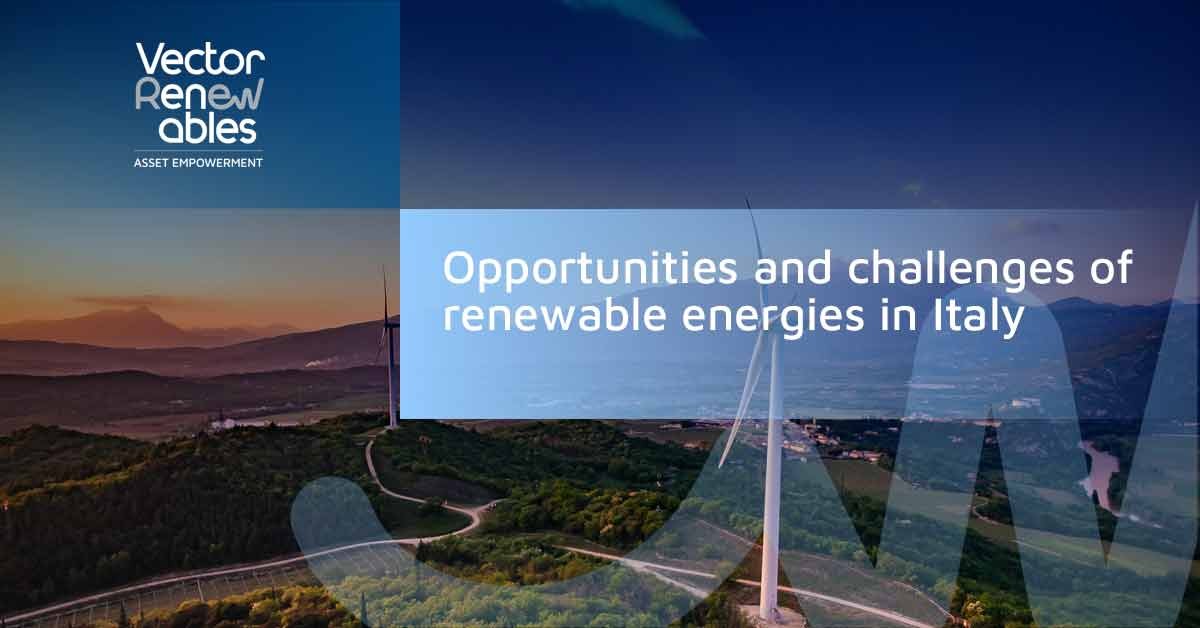Opportunities and challenges of renewable energies in Italy
Italy is world famous for its historical heritage and good climate, but also for its huge renewable potential. In this post we will explore some of the opportunities and challenges facing renewable energy in the Mediterranean country.
Italy's clean energy opportunities
Its renewable policies have clear and ambitious targets for 2030, in line with the European Union. By that date, Italy aims to have 30 % of total energy consumption coming from renewables and 55 % of electricity production as well.
• Development of renewables in the country. Unlike Denmark, Germany or Spain, its historical commitment to renewables has been lower, with the exception of hydropower. If we look at the figures for total energy supply, the data reveal that renewables still represent a very small percentage of the total. It therefore has ample room for growth.
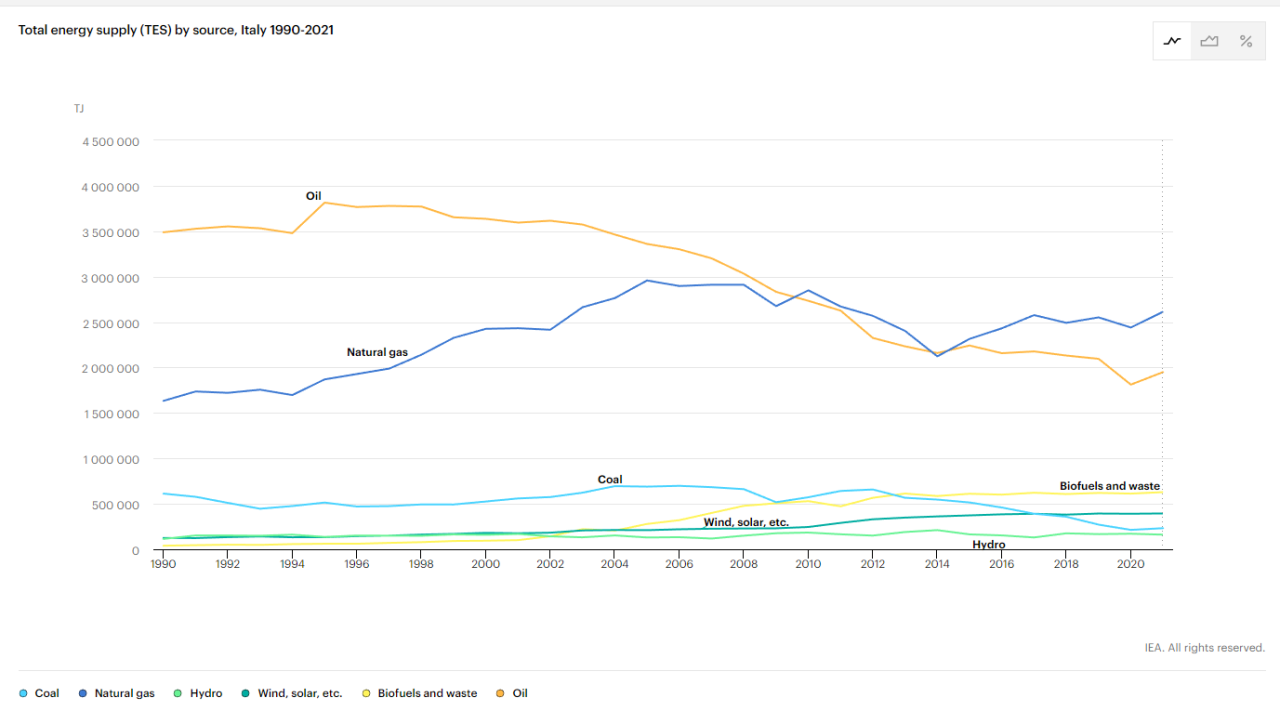
Total energy supply in Italy by source (1990-2021). IEA
• Measures to improve energy efficiency. Italy, like other countries in the European environment, adopted measures to reduce energy expenditure in the face of dependence on Russian gas. This involves limiting the temperature ranges for heating and cooling of commercial premises and homes. This is undoubtedly a crucial step in raising the Italian population's awareness of the importance of energy efficiency and advancing along this path.
• Potential of energy storage technologies. As the renewable energy market in Italy matures, there is increasing interest in energy storage. The country already has several electric storage battery plants, a number that is expected to increase in the coming years.
• Privileged situation for solar energy. The potential for this technology in Italy is high due to its radiation. According to the Photovoltaic Geographic Information System, the annual solar radiation in Italy varies from 3.6 kW per square meter in the Po River area to 5.4 kW per square meter in Sicily. The numbers speak for themselves, making Italy not only a country with good conditions for solar energy, but also with large market players that allow its development.
• A great advantage is the maturity of the market, which continues to present itself as one of the pioneers in large investments in wind energy. A great example is that "the boot" has opened the first offshore wind farm in the Mediterranean Sea. Italy also aims to achieve 5GW of floating offshore wind by 2040. As of today, data show that 7% of the total annual energy demand is covered by wind power. Italy is the fifth country in Europe in terms of wind-powered installations.
Challenges of renewable energies in Italy
• Reducing the high dependence on traditional energy. In Italy the consumption of fossil fuels, natural gas and coal still represents more than 50%. On the one hand, this makes it difficult to reduce CO2 emissions in order to meet the zero net emissions target, and on the other, it makes the country more dependent on energy imports.
• The impact of renewable energy plants on the energy transmission system is substantial. Specifically, in Southern Italy, solar and wind resources are more abundant, while energy consumption is more concentrated in the North. The management of the energy transmission system is challenging, partly due to the shape of the national territory.
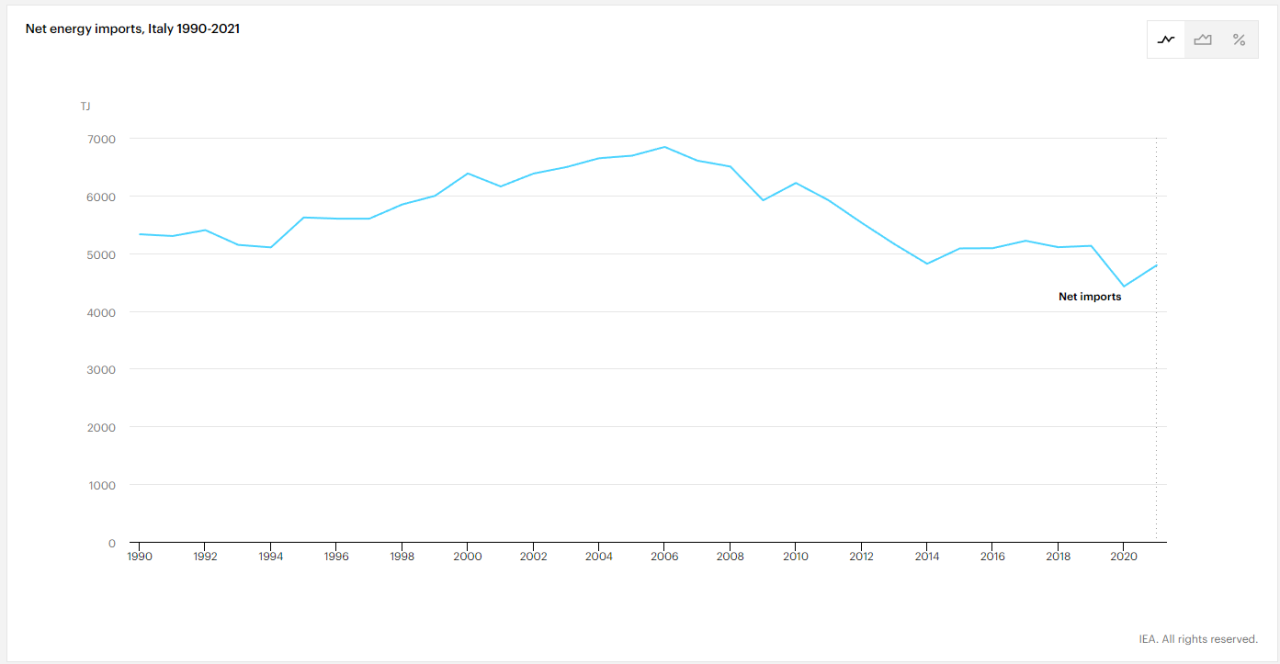
Evolution of net energy imports in Italy (1990-2021). IEA
• Reorient its renewables strategy towards technologies with less impact on the water footprint. At the forefront of renewable production in Italy are hydroelectric power plants, the costliest in terms of water consumption. They are also in a very prominent position. One of the challenges in the coming years will be to balance the percentage of wind and solar farms, the most efficient in water consumption, in order to promote water savings.
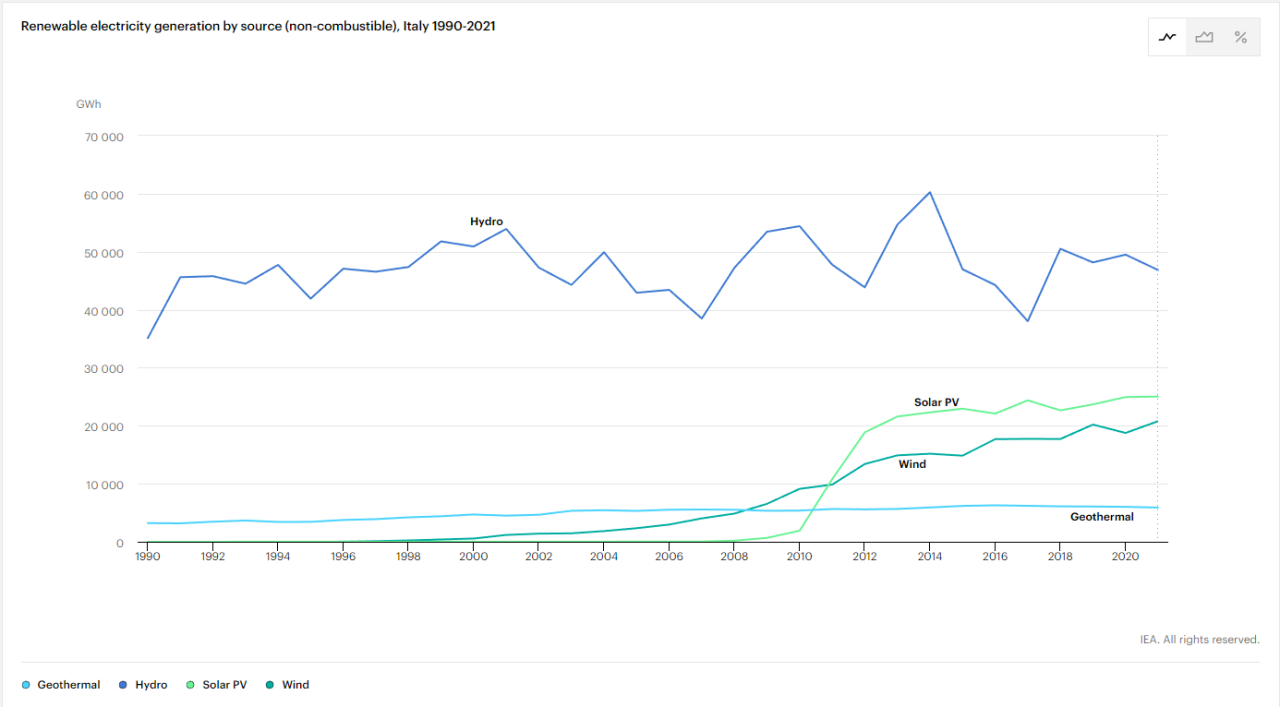
Renewable energy production by technology in Italy (1990-2021). IEA
In conclusion, Italy's renewable energy management has some strategic aspects to improve.
When you subscribe to the blog, we will send you an e-mail when there are new updates on the site so you wouldn't miss them.
